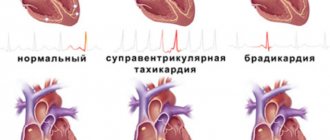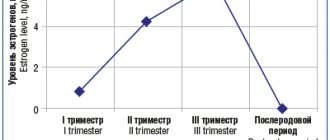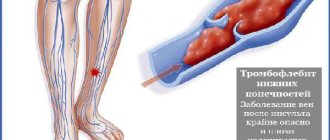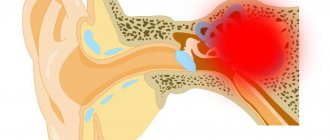Weakness occurs with many diseases, so it is almost impossible for a non-specialist to immediately determine what happened. Weakness in the legs is a very nonspecific symptom that can accompany disturbances in the functioning of many organs and systems. However, such a symptom should never be ignored, since even after heavy physical activity, weakness should go away after a short rest. If weakness in the legs occurs for no apparent reason, much less repeats repeatedly or its severity intensifies, you should consult a doctor immediately.
As mentioned earlier, there are many reasons for weakness in the legs; accordingly, the patient is faced with the question - what specialty should he see a doctor? Most often, such a specialist becomes a neurologist, and a little less often a therapist and an orthopedic traumatologist.
At CELT you can get advice from a neurologist.
- Initial consultation – 3,500
- Repeated consultation – 2,300
Make an appointment
Causes of weakness in the legs
Conventionally, the reasons can be divided into several groups:
- damage to the vascular system;
- muscle damage;
- damage to peripheral nerves;
- diseases of the central nervous system (brain or spinal cord);
- psychological and mental problems;
- joint diseases;
- diseases of the spine;
- intoxication.
During the initial examination and history taking, special attention is paid to the dynamics of the process - whether the weakness arose suddenly or gradually increased, whether it is constant or intermittent, and so on. It is important to find out not only the events that preceded the appearance of weakness in the legs, but also the accompanying symptoms: pain, swelling, convulsive twitching, dizziness, change in skin color, trembling, fever, degree of movement impairment, and the like.
A comparison of clinical and laboratory data allows you to quickly understand which disease of which organ or system caused weakness in the legs. CELT doctors have at their disposal an excellent diagnostic base, with the help of which they can determine not only the disease itself, but also how long it has existed, as well as its severity and prognosis.
Cervical osteochondrosis and weakness in the lower extremities: how is it related?
pain due to osteochondrosis does not always affect only the back or neck. The main reason for the development of a disease such as cervical osteochondrosis is a destructive process that occurs in the intervertebral discs and the vertebra itself. As a result of excessive stress on the spine, as well as damage to the peripheral nerves, pain tends to spread to the lower extremities.
Pain in the neck may indicate the first manifestation of this disease. As a consequence of cervical osteochondrosis, the development of unpleasant symptoms manifesting itself in the lower extremities is likely.
Causes of weakness and pain
The following factors are believed to have a detrimental effect on the development of leg pain:
- Degenerative changes in joints and cartilage, leading to an inflammatory process of nerve tissue, due to which pain moves to the base of the sacrum;
- Anatomical features of the structure of a certain organism (the location of nerve fibers is too deep, due to which sensitization (increased sensitivity) increases, and pain sensations radiate to the leg).
Unpleasant symptoms in the legs that manifest themselves with cervical osteochondrosis
Sensations in the lower extremities may be accompanied by:
- Pain;
- Spasms;
- Tingling fingers and feet;
- Burning;
- Numbness and loss of sensation;
- Heaviness in the legs;
- Weakness when moving.
It should be noted that not all people experience pain in the lower region. In general, if we talk about the occurrence of such pain, then this rather indicates that the disease has begun to progress. This means there is no need to delay it, it requires prompt treatment.
The first symptom will be weakness and pain in the neck, in the thoracic spine, and also at the base of the sacrum - all these areas are directly connected. Due to the increase in pain, damage to the nerve roots in the spinal cord can occur. From this point on, weakness in the lower extremities may begin to develop. Gait disturbances can often be observed.
If you observe these symptoms, you should consult a neurologist or vertebrologist.
Diagnosis and treatment
Diagnosis of the disease is made using MRI and CT. After a diagnosis of cervical osteochondrosis is made, the doctor prescribes treatment. In this case, it will be conservative, consisting of:
- Treatment with drugs;
- Massage.
It should be noted that treatment comes down not only to eliminating unpleasant symptoms, but also to treating the disease itself.
Medicines prescribed for this disease should help:
- Eliminate pain in the cervical region, spine and limbs;
- Reduce the increase in inflammation in nerve tissues and fibers;
- Eliminate spasms;
- Normalize metabolism in the tissues where the damage occurred.
With osteochondrosis, such a pleasant procedure as massage becomes indicated for use. This is simply a wonderful way to alleviate or completely get rid of oppressive pain in the legs. Basically, acupressure or classic therapeutic options for massage sessions are prescribed.
Massage treatments will help:
- Reduce muscle spasm;
- Improve blood flow;
- Normalize muscle metabolism.
It should be borne in mind that there should be no pain during the massage. If it is felt, it is better to stop the procedure. In addition, there are self-massage techniques for osteochondrosis, which are worth learning.
If conservative treatment does not help in any way, then surgery enters the arena. It is, of course, best to avoid it, since our body has the amazing ability to cope with many diseases on its own. But sometimes it happens that nothing helps, and the pain is still felt, if not with even greater force.
In general, surgical intervention is performed in cases where the pain is severe and unbearable, the legs lose sensitivity, and organs and systems cease to function normally.
Author: K.M.N., Academician of the Russian Academy of Medical Sciences M.A. Bobyr
Our doctors
Novikova Larisa Vaganovna
Neuropathologist, Candidate of Medical Sciences, doctor of the highest category
Experience 39 years
Make an appointment
Pankov Alexander Rostislavovich
Neurologist
40 years of experience
Make an appointment
Circulatory disorders
Vascular diseases of the nervous system, which can result in stroke and heart attack, are becoming more common among patients. In this case, situations of so-called transient ischemic attacks are possible, when a “flickering” of symptoms occurs - weakness occurs acutely, but quickly passes. After such an incident, you cannot be complacent and assume that everything turned out okay. It is necessary to identify the cause of the incident as quickly as possible and take appropriate preventive measures.
Stroke and heart attack can occur not only in the brain, but also in the spinal cord. A spinal stroke that occurs at any level can leave a person disabled or require a long and incredibly labor-intensive recovery. It must be said that due to the structure of the spinal cord, recovery after a spinal stroke is rarely successful, even in comparison with a stroke that affects the brain.
Weakness in the limbs may result from myocardial infarction, in which case gastrointestinal symptoms are often associated - nausea, abdominal pain, bloating. Some forms of heart attack thus remain undiagnosed, since the clinical picture is not typical and “imitates” an acute disease of other organs (for example, acute pancreatitis).
The veins or arteries of the lower extremities may be affected. Chronic venous insufficiency not only reduces physical strength, leads to pain and causes aesthetic problems, but also threatens the formation or separation of a blood clot (which, if the circumstances are unsuccessful, can block the pulmonary artery - pulmonary embolism is often a fatal condition). Blood stagnation also occurs in chronic heart failure, when swelling appears in the legs.
The formation of atherosclerotic plaques in the lumen of the vessel is a common cause of gait disturbance in the elderly. The so-called “intermittent claudication” develops.
Obliterating endarteritis also manifests itself as intermittent claudication, when the lumen of the vessels gradually narrows. Raynaud's disease is manifested by changes in skin color, weakness and swelling, the trigger for which is often hypothermia or frostbite. Menopause and premenstrual syndrome can also cause transient leg weakness.
Causes of the condition and accompanying symptoms
Weakness in the legs, like any other muscle weakness, is not an independent disease, but only one of the signs of a huge number of pathological conditions. In most cases, this is an alarming symptom that cannot be ignored. It can be caused by the development of various serious diseases, and often the patient needs urgent medical attention. We list the common causes of weakness in the legs.
Muscular dystrophies are a group of genetic diseases that include more than 30 pathologies in which muscle fibers are damaged and weakened. It is associated with a deficiency of the protein dystrophin, which is necessary for normal muscle function. The disease can appear at any age, although most often its signs become obvious in childhood. Boys get sick more often than girls. Symptoms of muscular dystrophy depend on the type. However, common to all pathologies is the appearance of weakness, including in the legs, difficulty walking, and decreased reflexes. Over time, other symptoms appear, such as difficulty breathing, swallowing, and so on1.
Myasthenia gravis is an autoimmune disease in which the body attacks acetylcholine receptors, resulting in disruption of neuromuscular transmission. The main signs of myasthenia gravis are weakness and fatigue of the striated muscles, including the muscles of the limbs. Manifestations of myasthenia gravis also include difficulty climbing stairs, facial paralysis, difficulty breathing, difficulty swallowing and chewing, hoarseness, drooping eyelids and other symptoms2.
Peripheral neuropathy is a condition in which damage to nerve fibers occurs against the background of various diseases and conditions, for example, trauma, systemic disease (diabetes mellitus, hepatitis), infection, congenital pathology. Today, more than 100 types of peripheral neuropathies are known, each of which has characteristics of its course and treatment. Weakness in the legs occurs when motor neurons, the nerve cells that provide motor coordination and maintain muscle tone, are damaged.
Pompe disease is a rare hereditary disease that can occur at any age: from 0 to 75 years and even older. It is inherited in an autosomal recessive manner and is manifested by a complex of symptoms. Characteristic signs of Pompe disease are general muscle weakness, weakness in the legs, decreased muscle tone, respiratory failure, shortness of breath even with minor exertion, hyperlorodosis, changes in gait, and unsteadiness when walking. sometimes - cardiac dysfunction (cardiomyopathy). In addition, patients may complain of drowsiness, increased fatigue, and hearing loss. Late-onset Pompe disease may present in adulthood, with the onset of symptoms usually gradual. Since the pathology is rare, difficulties often arise in establishing a diagnosis. Sometimes it takes years. To speed up diagnosis and select the right treatment, it is important to be attentive to your condition and analyze the entire range of symptoms4.
Graves' disease is an autoimmune disease that affects the thyroid gland. Graves' disease often leads to the development of hyperthyroidism. The symptoms of the disease are specific. Along with weakness in the legs and general muscle weakness, patients are worried about irritability, sleep disturbances, rapid heartbeat, heat intolerance, diarrhea, and unexplained weight loss. External signs of Graves' disease are bulging eyes and the appearance of a bulge in the neck (due to an enlarged thyroid gland)5.
Guillain-Barré syndrome is a rare autoimmune disease in which the immune system attacks part of the peripheral nervous system. Usually the syndrome develops after a bacterial or viral infection, sometimes the “trigger” is vaccination or surgery. It can develop at any age, but symptoms most often appear in adults. The first symptoms of the disease are weakness and tingling in the legs, which then spread to the face and hands. Sometimes this leads to paralysis. In some patients, the respiratory muscles are affected, causing breathing problems and difficulties with speech and swallowing6.
Multiple sclerosis is a chronic, progressive disease that affects various parts of the central nervous system. The reason remains unknown. It is assumed that the disease develops under the influence of genetic and external factors. In multiple sclerosis, the immune system attacks the protective covering of nerve fibers, myelin. The disease manifests itself as a complex of symptoms. Among the most common are muscle fatigue, spasms, muscle tremors, difficulty walking, pain7.
Sciatica develops due to pinching (compression) of the roots of the lumbar spine. This occurs due to damage to the discs or narrowing of the spinal canal. The main symptom is a sharp pain that spreads from the lower back to the limbs, usually on one side of the body. In addition, weakness or numbness in the legs may develop8.
Weakness in the legs can also appear with other diseases and conditions.
Sensory disturbances due to nerve damage
This is the most common disorder in diabetes mellitus - polyneuropathy, which almost inevitably occurs 15 or 20 years after the onset of the disease, but everything can happen much earlier. Numbness, heaviness, and decreased sensitivity appear.
The same disorders occur with funicular myelosis or degenerative disease of the spinal cord, when deep sensitivity is immediately impaired.
Neurologists identify many causes of polyneuropathy - from viruses to chronic alcoholism. Among them are tick bites, cytomegalovirus, tumors, diphtheria, chemical poisoning and much more.
Psychological problems
Emotions influence our lives much more than we realize. The fact is that the body’s reactions are regulated by the autonomic nervous system, another name for which is the autonomic one. This system operates according to its own laws, regardless of our will and desires. Therefore, the body's reactions - heartbeat, breathing, blood circulation, digestion, spasms - practically cannot be regulated by willpower. Our every daily experience, and even more so mental illness, affects the functioning of all organs and systems.
Weakness in the legs occurs with the following disorders:
- panic attack;
- hysteria;
- prolonged stress;
- anxiety disorder;
- depression;
- schizophrenia;
- nervous exhaustion or neurasthenia;
- chronic psychotrauma;
- neurocirculatory dystonia.
How does weakness in the arms and legs manifest?
Symptoms of weakness in the arms and legs:
- Feeling that arms and legs are weak. It becomes difficult to walk, carry heavy objects, even just bags of groceries; sometimes it is difficult to simply write with a pen or hold a cup in your hands.
- There is a feeling of numbness in the limbs - they become disobedient and stiff.
- Sometimes the weakness is so strong that one eyelid may droop and it becomes difficult to swallow and chew.
A person feels eternally tired, it is difficult for him to move, his limbs do not obey and are unable to perform their usual work.
Always remember that muscle weakness in the arms and legs is a symptom of another disease or condition.
Bone lesions
Weakness and decreased muscle strength in the legs may be the first sign of osteoporosis, or decreased bone mineral density.
Muscle tendons lose support. It is not uncommon for people who constantly use their limbs to suffer from a “stress fracture” of the foot. This happens when a critical mass of microtraumas accumulates from the same type of loads - from running, walking, jumping, jerking. Such injuries occur not only in athletes, but also in people constantly engaged in monotonous physical work.
Some bone tumors develop gradually and imperceptibly, so at first nothing but weakness bothers the person.
How to improve unsteady gait
Walking 30 minutes a day and maintaining a physically active lifestyle are the most important recommendations for maintaining mobility. But walking alone is not enough.
If your gait has changed due to problems with your lower extremities, exercises to strengthen your muscles and improve your balance will help. They are prescribed by neurologists, orthopedists or physiotherapists. Here are examples of popular exercises.
Balancing on one leg
Hold onto a chair and keep your weight on one leg only. Slowly release the chair. Try balancing for 30 seconds and then increase the time to a minute.
Leg raises
While leaning on a chair, slowly lift one leg in front of you at least 20cm off the ground. At the same time, hold it straight for 5-10 seconds. Repeat several times, then perform lifts with the other leg.
Heel raise
Stand with your feet shoulder-width apart. Slowly rise up onto your toes, then lower back down. Repeat ten or more times.
Daily overload
A load that exceeds the physiological load for a long time inevitably leads to weakness in the legs.
This is primarily excess weight, when the joints and muscles of the lower extremities bear excessive load for a number of years. Obesity destroys bones, muscles and ligaments very slowly, and it seems to go unnoticed. But if you compare the physical capabilities of people with normal weight and obesity, the comparison will not be in favor of the latter. The third trimester of pregnancy is a test for a woman’s musculoskeletal system, when she is forced to adapt to her growing body weight. Lymphostasis or elephantiasis is another reason for the increased load on the legs.
The most dangerous symptom
You should sound the alarm if weakness manifests itself not in both, but only in one leg, especially if one arm on the same side also goes numb. Very often this indicates a pre-stroke condition, when a vessel in the brain becomes blocked. You must call a doctor immediately.
Weakness in the left leg and loss or decrease in sensation indicate neurological pathology. In this case, you should also not hesitate, even if the symptoms are minor. Over time, the disease may develop into a tumor, disorders of the nervous system will worsen and lead to complications.
Weakness in one leg is a very alarming and dangerous symptom.
If you feel weakness in your legs that does not go away after rest and returns regularly, if it is also accompanied by pain or other symptoms of illness, do not attribute it to fatigue. The body signals you about problems that can be very serious. Start with a therapist, who will refer you to an orthopedist or neurologist and prescribe an examination.
If the reason is fatigue, an integrated approach is needed. It is necessary to establish a daily routine so that it harmoniously combines physical activity and rest. It is very important to eat well and spend more time in the fresh air. Make sure you wear good, season-appropriate shoes that don’t compress your limbs. But even if fatigue does not go away with such measures, consult a specialist.
Intoxication
Any poisoning or infection causes general poisoning of the body and failures in many systems. Even a common ARVI, not to mention a bacterial infection, is accompanied by general weakness. Sunstroke, harmful working conditions, stale food - everything can lead to weakness, and each reason needs to be dealt with. In many cases, long-term alcoholism is destructive to nerves and muscles.
CELT doctors, who have unique practical experience, will help to accurately determine the cause of the disease.
Make an appointment through the application or by calling +7 +7 We work every day:
- Monday—Friday: 8.00—20.00
- Saturday: 8.00–18.00
- Sunday is a day off
The nearest metro and MCC stations to the clinic:
- Highway of Enthusiasts or Perovo
- Partisan
- Enthusiast Highway
Driving directions










